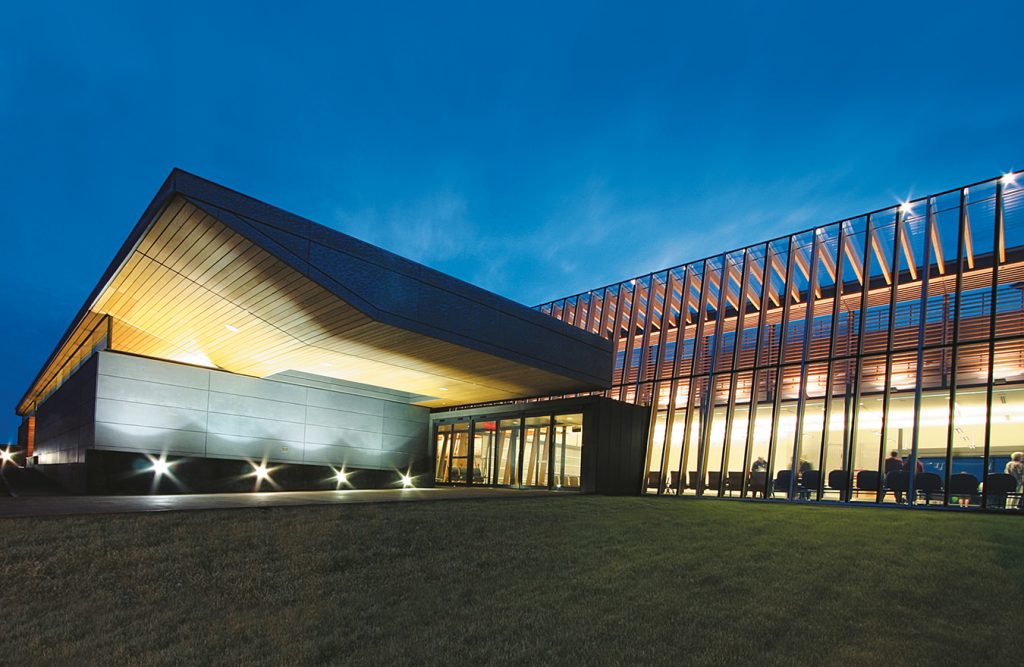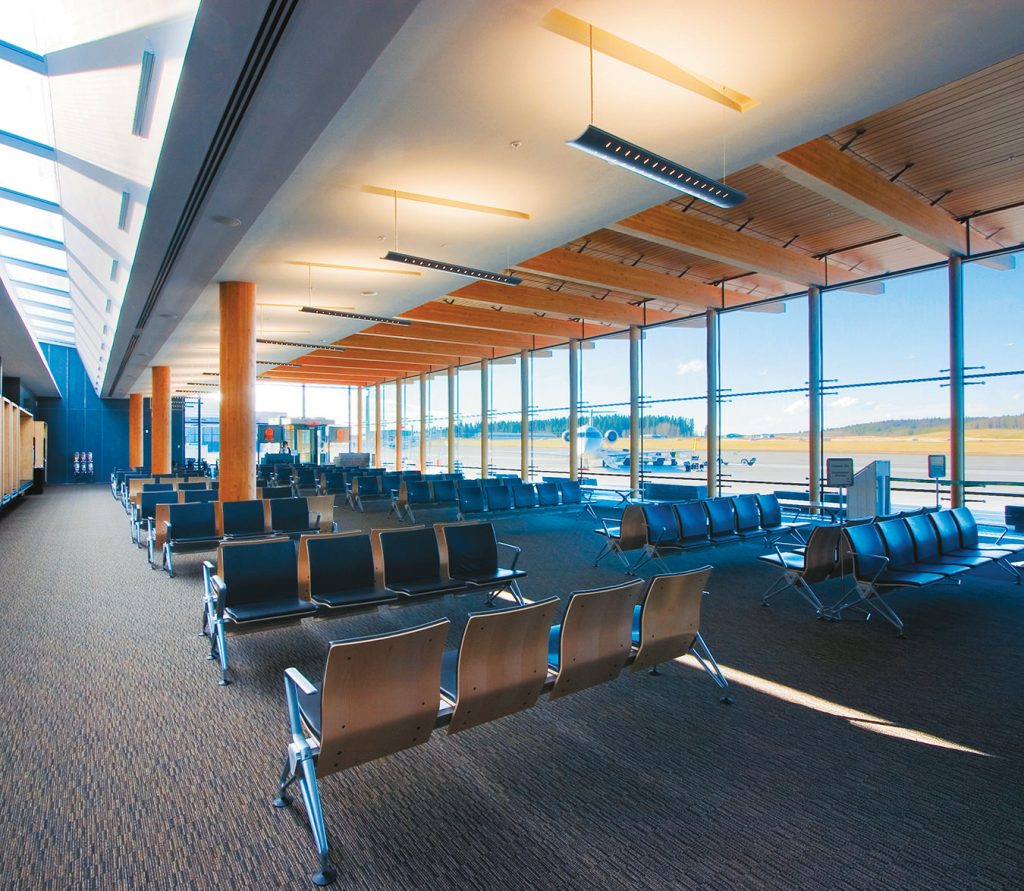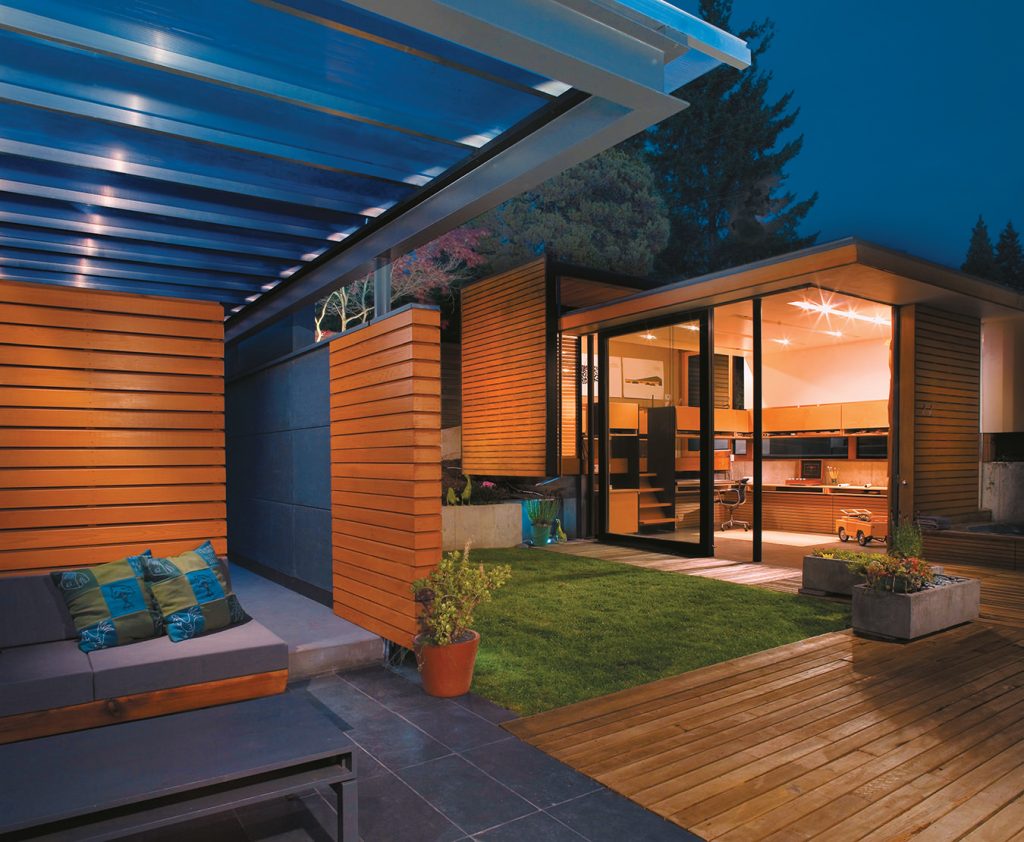Michael Green grabs a piece of wood from atop a shelf in his office and hands it to me for a look: a large clothes hanger roughly carved from a chunk of driftwood? Not quite. In effect, it is a full-scale technical mock-up for an architecturally-designed device that has served three different purposes in the construction of the Prince George Airport expansion. A few years ago, Green crafted the model with a band saw and belt sander in his home woodwork shop, after conceiving it and drawing it up in his architecture studio.
Today, metal casts of the precision device that Green and his colleagues at McFarlane Green Biggar Architecture and Design (MGB) have created, act as the supports upon which the roof at the Prince George Airport terminal building sits. The same metal creations function as brackets that hold the building’s windows in place. And the chairs in the passenger lounge were also custom-designed using the very same piece for legs. Three uses for one innovatively conceived and carefully designed device. A simple architectural detail perhaps, but a functional, multi-purpose piece of art no less.
This is an example of the holistic approach to design that North Vancouver–based MGB embraces. Their team of designers is known for innovative detailing, whether it’s a small-scale piece of furniture for a backyard out-building, or a complicated architectural solution for a multi-faceted project like the environmentally-friendly residential apartment tower they will be building in Taichung, Taiwan. “We’re civil servants. That is the way we see ourselves as architects and designers,” says Green. “We’re not here to be serving our own interests or our egos. Buildings shouldn’t be the statement of the moment. They should endure through simplicity in design.” This goal is especially critical in Taiwan, where the trend in development is “build, demolish, build”.
Steve McFarlane, another of MGB’s three principals, elaborates, “Architecture over time has always focused on a philosophy of design.” For MGB, the focus is simplicity. The six-year-old firm brings architects Michael Green and Steve McFarlane together with interior designer Michelle Biggar and more than 20 associates skilled in architecture, landscape architecture, interior design and graphic design. “Every project we do is one big connected design process from the smallest detail to the largest,” McFarlane says. “Our staff works cross-disciplinary, looking for functional, simple solutions.” He points out that amortizing the cost of the custom-designed castings for the roof support with two additional uses not only makes financial sense, but is good design practice. As he says, “A good designer is also a good generalist.”
This approach has kept the firm’s identity somewhat under the radar in the world of consumer-led architectural fame, but it has also earned the fledging firm some impressive recognition. The two phases of expansion they planned for the Prince George Airport have brought home Lieutenant Governor of British Columbia Award in Architecture Medals in 2005 and 2006 respectively. Together, they received a North American Wood Design Award Citation in 2005 and the Royal Architectural Institute of Canada Award of Excellence just this year. As for the 269-square-foot office they designed for a North Vancouver accessory building, it was awarded with a Lieutenant Governor of British Columbia Certificate of Merit in 2004.
MGB’s work has also earned them top billing in their own backyard. They recently won out over 18 contenders for a contract to design the $11-million renovation of North Vancouver’s City Hall. The renovation project will challenge them to consider the building’s ecological performance and sustainability—just as they do in all of their projects. “Sustainability is a fact and not an aesthetic for us,” Green says. “We don’t make huge leaps. In fact, many times we’re going backwards to be sustainable. It is not a radical shift in how architecture is made.”
Green also explains how technology has allowed MGB to engineer materials, especially natural materials like wood, for use in new ways: “We take a natural material like wood and learn how to use it innovatively. We look for ways to waste nothing. That’s just a common sense approach to sustainability that often gets overlooked.” For example, MGB intends to use B.C. fir extensively in the construction of a new airport terminal they have designed for the Turks and Caicos Islands in the Caribbean.
It is this practical yet innovative approach to their use of materials, and a certain simplicity of design, that distinguishes MGB. The architects and designers at this growing North Vancouver firm hope this philosophy will soon earn them the opportunity to compete with other big-name architects in a public competition for a particular major local project. “If the competition is open and anonymous, we are all for it.” In the meantime, there are plenty of projects sustaining their architectural practice already.
Photos: MGB Architecture and Design.











